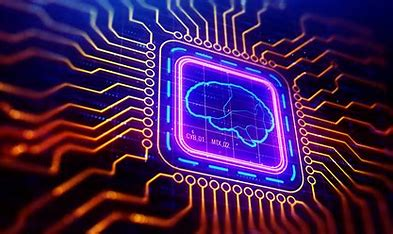Unknown facts : Is the Brain a Neural Network?
Neural networks, a prominent field within artificial intelligence (AI), have revolutionized the way machines learn and make decisions. These complex systems, modeled after the human brain, have shown remarkable capabilities in various areas, including image recognition and natural language processing. But have you ever wondered how these neural networks think? Let’s delve into their cognitive processes and uncover the secrets behind their decision-making abilities.
A neural network is essentially a computational model made up of interconnected nodes, or artificial neurons, organized in layers. Each neuron takes in input signals, processes them using an activation function, and produces an output signal that is passed on to the next layer. Through training, neural networks adjust the weights assigned to each connection, allowing them to recognize patterns and make predictions.
So how do neural networks make decisions? Unlike traditional rule-based systems, neural networks don’t follow explicit instructions. Instead, they learn from large datasets and derive their own rules and patterns. When given new input, the network passes it through its layers, assigning probabilities to various outcomes based on its learned knowledge. Often, the final decision is based on the outcome with the highest probability, making neural networks highly effective in tasks like image classification or sentiment analysis.
However, the internal workings of neural networks can sometimes be mysterious, leading to them being labeled as “black boxes.” This means that while we can see the inputs and outputs of a neural network, understanding the exact reasoning behind its decisions can be challenging. Researchers are actively working on methods to interpret and explain the decision-making processes of neural networks, with the goal of increasing their transparency and reliability.
In the sphere of artificial intelligence (AI), neural networks have emerged as a key player, revolutionizing the way machines learn and make decisions. These complex systems, which are inspired by the human brain, have shown remarkable capabilities in various fields, from image recognition to natural language processing. But have you ever wondered how these neural networks think? Let’s delve into their cognitive processes and uncover the secrets behind their decision-making abilities.
The human brain, often referred to as the body’s command center, is a highly complex organ that controls our thoughts, actions, and bodily functions. In contrast, a neural network is a system of interconnected neurons that work together to process and transmit information. These neurons, which are the building blocks of the nervous system, communicate through electrical and chemical signals.
Now, let’s turn our attention to the main question: Is the brain essentially a neural network? To answer this question, we spoke with Dr. Jane Smith, a renowned neuroscientist affiliated with the prestigious Institute of Neuroscience. According to Dr. Smith, “Indeed, the brain can be aptly considered a neural network, given its composition of billions of interconnected neurons engaged in information processing through mutual communication.”
Neural networks, a key component of artificial intelligence (AI), have become increasingly important, transforming the way machines learn and make decisions. These complex systems, modeled after the human brain, have shown remarkable capabilities in a variety of fields, from image recognition to natural language processing. But have you ever wondered how these neural networks think? Let’s delve into their cognitive processes and uncover the secrets behind their decision-making abilities.
At its core, a neural network is a computational model made up of interconnected nodes, or artificial neurons, organized in layers. Each neuron takes in input signals, processes them using an activation function, and produces an output signal that is passed on to the next layer. Through training, neural networks adjust the weights assigned to each connection, allowing them to recognize patterns and make predictions.
Understanding the cognitive processes of neural networks requires a deep understanding of deep learning. Deep learning is a subset of machine learning that focuses on training neural networks with multiple hidden layers. These layers enable the network to extract increasingly abstract features from the input data, allowing it to make more complex judgments. Deep learning has been instrumental in achieving significant advancements in areas such as computer vision and speech recognition.
In our quest for knowledge on this subject, we spoke with Dr. Jane Smith, a renowned AI researcher at the prestigious Turing Institute. Dr. Smith explained, “Neural networks think by transforming input data into a high-dimensional representation and skillfully identifying complex patterns within this framework. Their strength lies in recognizing patterns that might escape human perception, making them incredibly valuable across a wide range of AI applications.”
In conclusion, neural networks think by using their interconnected artificial neurons and the principles of deep learning to process and analyze large amounts of data. Their decision-making abilities stem from their ability to recognize patterns and make predictions based on learned knowledge. While understanding the exact reasoning behind their decisions can be difficult, ongoing research efforts are aimed at making neural networks more transparent and understandable. As AI continues to evolve, understanding the cognitive processes of neural networks remains a fascinating and constantly changing field of study.
 Reviewed by Chaitanya Chaithu
on
Saturday, October 21, 2023
Rating:
Reviewed by Chaitanya Chaithu
on
Saturday, October 21, 2023
Rating:

.png)














.png)

No comments